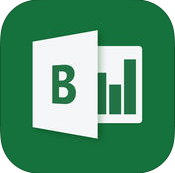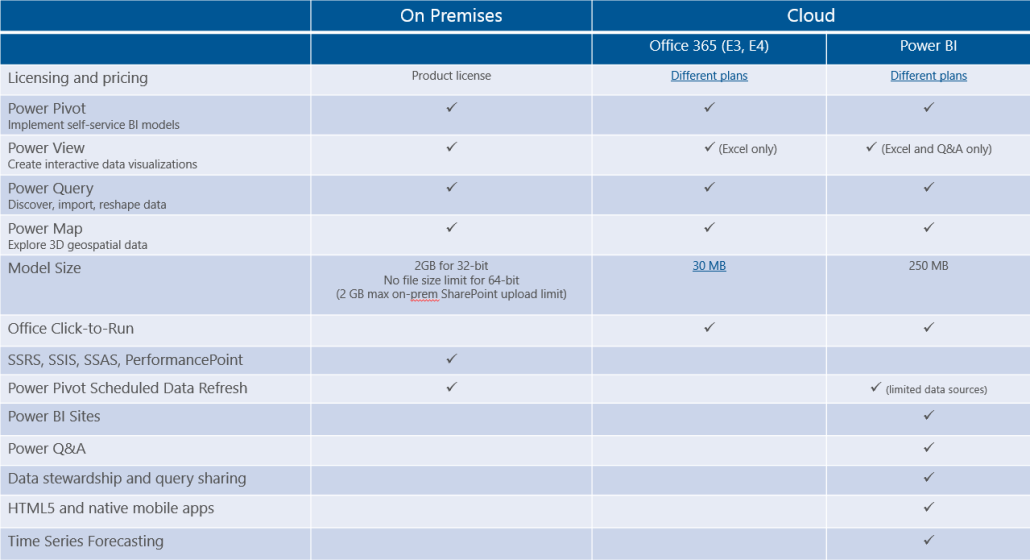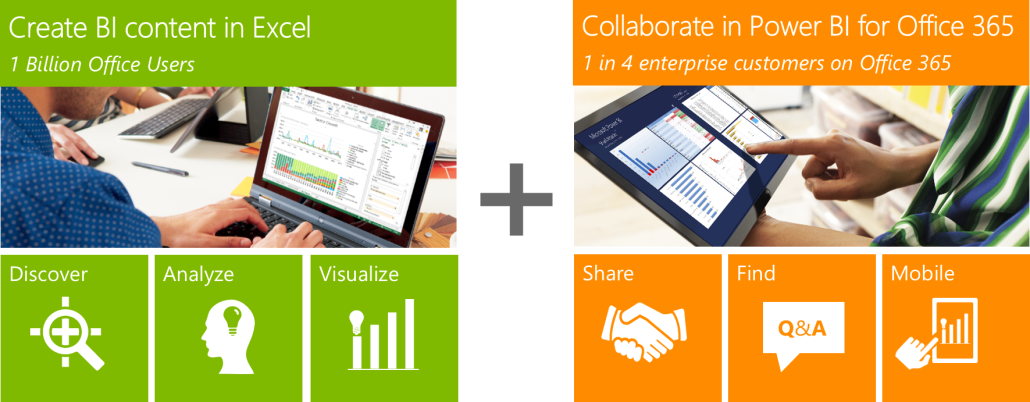Prologika Newsletter Summer 2014
 During the Day 1 keynote at the 2014 BA Conference, Microsoft committed to BI on your terms. They said that all new features will be eventually available both on premises and in the cloud. We’ve also learned that hybrid scenarios will be possible in near future, such as hosting Power View and SSRS reports in the cloud connected to on-prem data sources. Based on my coversations with customers, many people are confused which path (on-prem or cloud) to take. I hope this newsletter clarifies.
During the Day 1 keynote at the 2014 BA Conference, Microsoft committed to BI on your terms. They said that all new features will be eventually available both on premises and in the cloud. We’ve also learned that hybrid scenarios will be possible in near future, such as hosting Power View and SSRS reports in the cloud connected to on-prem data sources. Based on my coversations with customers, many people are confused which path (on-prem or cloud) to take. I hope this newsletter clarifies.
BI ON YOUR TERMS
The following table should help you understand how the Microsoft on-prem and cloud BI offerings compare at a high level (click to enlarge the image). Choosing between on-prem and cloud BI is essentially a decision about where SharePoint would be installed.

Self-service and Team BI
Microsoft markets Power BI as “self-service BI with the familiarity of Office and the power of the cloud”. It’s important to clarify however that the self-service BI tools (Power Pivot, Power View, Power Query, and Power Map) that are shown in green in the diagram below are implemented as add-ins to Excel and thus are available to no additional cost for Excel users.

In other words, you don’t need an Office 365 or Power BI license to use these tools. You can purchase Office from a retailer, such as Amazon, and have all of the Excel “power” components:
Power Pivot: Integrated with Excel 2013 (needs to be downloaded for Excel 2010)
Power Query: Needs to be downloaded for both Excel 2010 and 2013
Power Map: Needs to be downloaded for Excel 2013 (doesn’t support Excel 2010).
Power View: Integrated with Excel 2013 (not available for Excel 2010
but available in SharePoint Server integrated with SQL Server 2012)
The orange box on the right is the SharePoint cloud infrastructure that enables team BI for exploring and sharing BI artifacts. You can think of it as an upgrade to Office 365 that is available on a subscription basis. For example, while Office 365 (Midsize Business, E3, E4) allows Excel workbooks with pivot and Power View reports to be rendered online, it limits the workbook size currently to 30 MB (a more detailed Office 365 feature breakdown is available online).By contrast, Power BI supports models up to 250 MB in size and on-prem SharePoint supports file sizes up to 2 GB in size. Note that the cloud data size limits are likely to change upwards. So, the model size is one factor to consider when planning your team BI environment.
Office Click-to-Run
Most corporate Office installations are performed by downloading and running the MSI installer. The MSI setup is a perpetual one (you pay for a version once and you’re entitled to fixes for it). If you have an Office 365 subscription, you can install the Click-To-Run version of Office. This is a subscription-based Office 365 setup. You continuously pay for using the software and you’re entitled to fixes and the latest features within the O365 plan you’re subscribed to. I wrote more about the Office C2R setup in this blog.
Organizational BI
At this point, both Office 365 and Power BI are all about self-service and team BI delivered with Excel workbooks that embed Power Pivot modes. The typical scenario is that a power user would create a BI model and reports on the desktop and share these artifacts by deploying to the cloud. The rest of the BI tools that are typically used for organizational BI (SSIS, SSRS, SSAS, PerformancePoint Services) are not yet available in the cloud.
As I mentioned in the beginning, at the BA conference Microsoft said that they plan to host SSRS and Power View in the cloud in near future to enable hybrid scenarios. Meanwhile, the only way to build a MS cloud-based organizational solutions would be to deploy them to Azure virtual machines, with the exception of SQL Server Database Engine and Reporting Services which as available as Platform as a Service (PaaS) Azure offerings.
Additional Features
As an upgrade to Office 365, Power BI has additional features that are currently only available in Power BI, such as Q&A, data stewardship, and so on. I discussed these features in more details in my previous newsletter. Microsoft plans to release new BI features first to Power BI and then to on-prem SQL Server and SharePoint. An example of such a feature is Power View Time Series Forecasting which just got released to Power BI.
As you’d agree, the BI landscape is fast-moving and it might be overwhelming. As a Microsoft Gold Partner and premier BI firm, you can trust us to help you plan and implement your BI projects.
Regards,
Teo Lachev
President and Owner
Prologika, LLC | Making Sense of Data
Microsoft Partner | Gold Business Intelligence
EVENTS & RESOURCES
 Atlanta BI Group: Microsoft BI for Financial Reporting by Justin Stephens on June 30th
Atlanta BI Group: Microsoft BI for Financial Reporting by Justin Stephens on June 30th
 Atlanta BI Group: Integrating Data Mining by Mark Tabladillo on July 28th
Atlanta BI Group: Integrating Data Mining by Mark Tabladillo on July 28th
 Atlanta BI Group: Making Your SSIS Fly Beyond the Sky by Carlos Rodriguez on August 25th
Atlanta BI Group: Making Your SSIS Fly Beyond the Sky by Carlos Rodriguez on August 25th




